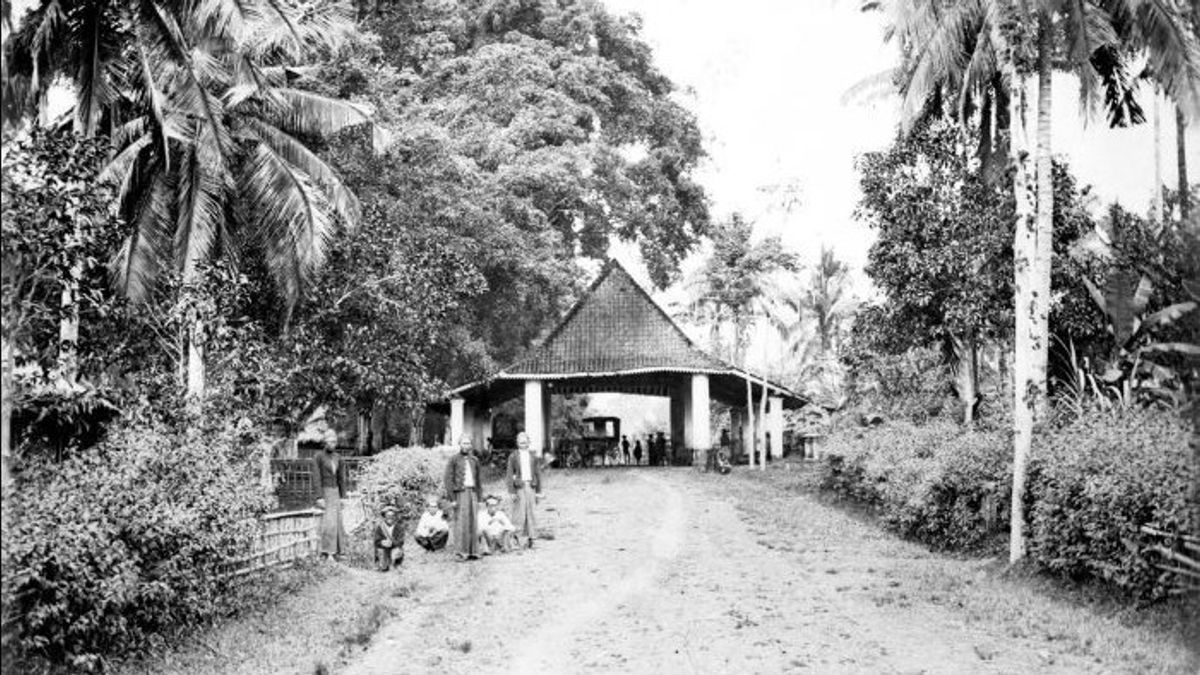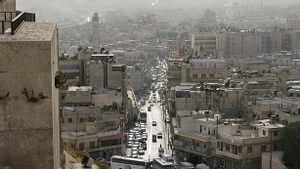JAKARTA - In the frame of the past, the highway is political history. In Indonesia, the story of the highway begins with the leadership of Marshal Herman Willem Daendels as Governor of the Dutch East Indies in 1809. Jalan Raya Pos, his name.
Starting from war preparations, then trade profits followed. The road is described as stretching for a thousand kilometers, running between Anyer and Panarukan. This gigantic work succeeded in uniting the land of Pasundan and the land of Java as a single economic area.
The arrival of Mas Galak - Daendels' nickname - to Java was quite shocking. Daendels set foot in Batavia on January 5, 1808. His arrival caused shock after shock to the old people in the colonial work system.
As soon as he arrived in the archipelago, Daendels immediately showed his sharpness. Daendels immediately decided to move to Butenzorg (Bogor) right away, even though the rain was pouring down. Daendels argued that Batavia's environment was not healthy.

His decision put a lot of effort on the Council of the Indies. According to them, it takes up to 30 teams to move. But Daendels with his own ego revealed: I will use 31 teams.
Daendels' orders were obeyed immediately. Daendels' power was strong in Indian soil. The Dutch King Louis Bonaparte himself gave full power to Daendels. As a result, Daendels immediately reorganized the Indies Council and gave him advisory rights to uphold his banner of power in the Dutch East Indies.
"Then he started working, cutting down corruption, destroying and building administration, building roads and fortifications. In short, everything one could predict would do someone who considered him a dictator. He achieved many results but brought great hatred to many people whose interests were damaged, ”wrote Bernard HM Vlekke in the book Nusantara (1961).
The significance of Jalan Raya Pos
The beginning of the construction of Jalan Raya Pos or De Grote Postweg was intended for defense preparations on the north coast of Java Island in 1809. However, the impact of its construction has far exceeded Daendels' expectations.
That road did not allow it to prevent British soldiers from landing. However, its presence was able to change the economic and living conditions of Java Island in a big way.
As a result, the journey from Batavia to Surabaya could only be reached in five days. The work of Daendels, by the French historian Denys Lombard, is even said to have succeeded in uniting the land of Pasundan and the land of Java.
The unification then creates a single economic area. The highway allowed development in various other sectors, from plantations to the commercialization of other colonial products, such as rice.
“Besides, the road creates a very important social group, namely the middlemen. Last and foremost, just as the Trans-Siberian railroad allowed movement of the population, it gave rise to mobility in the farming communities. Through a network of secondary roads connected to the central artery, in various densely populated areas there will be a new square to areas that are still pristine, "said Denys Lombard in the book Nusa Jawa: SIlang Budaya Volume 1 (1992).

[/ read_more]
As a result, many markets and shops have sprung up along Jalan Raya Pos. In the past, people used to serve river transportation. Then thanks to Jalan Raya Pos, the activity slowly shifted to the land route.
In the same breath, the native people also enjoyed the benefits of trade and industry. Moreover, the road is not only useful for transporting food, but is also useful for improving health. In its grand narrative, Jalan Raya Pos is even believed to have displaced a feudal mentality to a modern one.
The famous Indonesian writer, Pramoedya Ananta Toer, in his novel, Jalan Raya Pos, Jalan Daendels (1995) indeed condemned the casualties in the construction of Jalan Raya Pos. Nevertheless, Pram acknowledged that the Pos Raya Road, since it was used in 1809, has been transformed into an eternal important infrastructure.
"The success of his predecessor (Daendels) is detailed: not only building the port of Surabaya and Fort Louis, Jalan Raya Pos that divides Java from west to east, laying the first stones of various buildings in Batavia, but also, and not only that, his services, compiling an army, "Wrote Jean Rocher in the book Napoleonic Wars in Java 1811 (2011).
Genocide and forced labor?Even so, many people doubt the construction of the Jalan Raya Pos masterpiece. The most prominent issues are genocide and forced labor. Quoted by Asvi Warman Adam in his writing in Tempo Magazine entitled Daendels 'Giant Work (2005), it is explained that this narrative is the opinion of Daendels' political opponents that the colonial government had no money in development.
Then Daendels is said to have used the Javanese as unpaid laborers. Political opponents of Daendels wrote that 12 thousand workers died, including 500 in Megamendung.
However, senior researcher Asvi Warman Adam said it needed further research. This is because there is no definite number of victims of the Pos Highway construction. Most of the casualty figures came only from Dutch books which were written by political opponents of Daendels.
[/ read_more]
Likewise, the case of the issue of forced labor which is not entirely true. In a copy of the document belonging to JA van der Chijs entitled Nederlandsch-Indisch Plakaatboek 1602-1811 volume 14 (1895), it is elaborated at length regarding the ten articles of Daendels instructions in the construction of the Pos Highway.
In Article 3, for example, it is stated that this road should be made 2 roeds wide or about 7.5 meters. At every distance of about 150 meters, poles or pedals must be erected as distance markers and district markers, and residents to maintain the roads.

"The construction from Cisarua to Cianjur is said to require 1,100 coolies to be imported from Java. Interestingly, articles 4 and 5 mention in detail the number of coolies and their wages. From Cisarua to Cianjur 400 people, from Cianjur to Rajamandala 150 people, from Rajamandala to Bandung 200 people, from Bandung to Parakanmuncang 50 people, and from Parakanmuncang to Sumedang 150 people, "said JA van der Chijs quoted by Tempo Magazine in the report of Ten Instruction Mas. Galak (2015).
As for the wages per coolie from Cisarua to Cianjur 10 ringgit. From Cianjur to Rajamandala 4 ringgit. From Rajamandala to Bandung 6 ringgit. From Bandung to Parakanmuncang 1 ringgit. From Parakanmuncang to Sumedang 5 ringgit. And from Sumedang to Karangsambung 4 ringgit. These details prove that Daendels did not fully implement forced labor.
Moreover, the benefits of the construction of Jalan Raya Pos have been felt at least until today. In a broader corridor, the concept of regional centralization via Jalan Raya Pos owned by Deandels actually helps develop the concept of the Indonesian region as a single political entity. The historian Denys Lombard says that Daendels' expression "From Anyar to Panarukan," Seokarno later changed the phrase to: From Sabang to Merauke.
Other MEMORY[/ read_more]
The English, Chinese, Japanese, Arabic, and French versions are automatically generated by the AI. So there may still be inaccuracies in translating, please always see Indonesian as our main language. (system supported by DigitalSiber.id)












